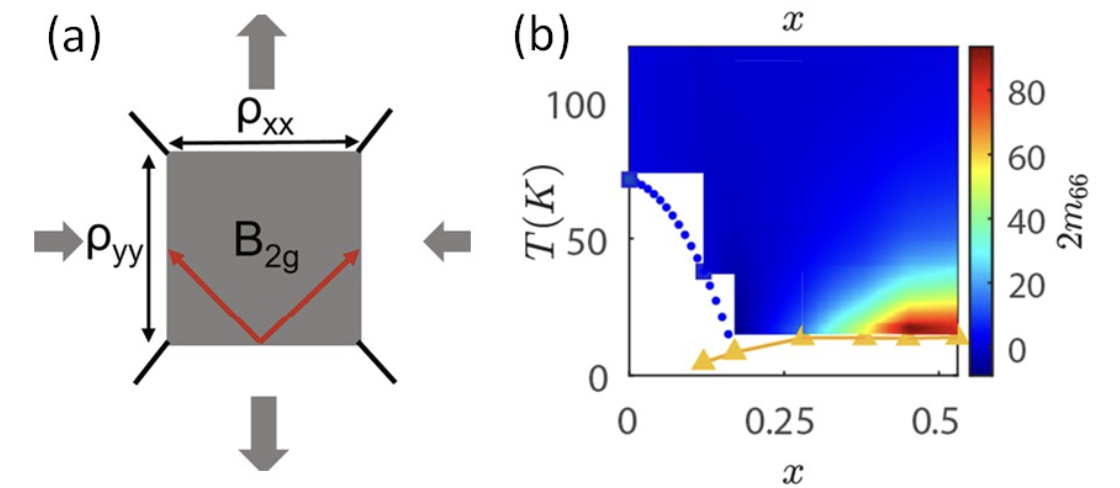 Electronic nematicity is a correlated electronic state in solids that spontaneously breaks rotational symmetry. This work found that in Fe1+yTe1-xSex, one of the most strongly correlated iron-based superconductors, electronic nematicity is closely linked to magnetism, and its fluctuations may be responsible for superconducting pairing.
Electronic nematicity is a correlated electronic state in solids that spontaneously breaks rotational symmetry. This work found that in Fe1+yTe1-xSex, one of the most strongly correlated iron-based superconductors, electronic nematicity is closely linked to magnetism, and its fluctuations may be responsible for superconducting pairing.
Although the relationship between nematicity, magnetism, and superconductivity has been observed in some iron-based superconductor families, it remained unclear whether this correlation would persist when the system is pushed to the strongly correlated limit. This limit involves a metal-insulator transition in part of the energy spectrum known as the orbital selective Mott transition (OSMT), which has been observed in Fe1+yTe1-xSex. This study showed that nematic fluctuations in Fe1+yTe1-xSex not only closely follow magnetic fluctuations but also exhibit an unusual temperature dependence resulting from the OSMT.
The observation of nematic fluctuations in Fe1+yTe1-xSex underscores its universal significance in iron-based superconductors, thereby paving the way for the manipulation and utilization of phase transitions in layered materials for practical applications.